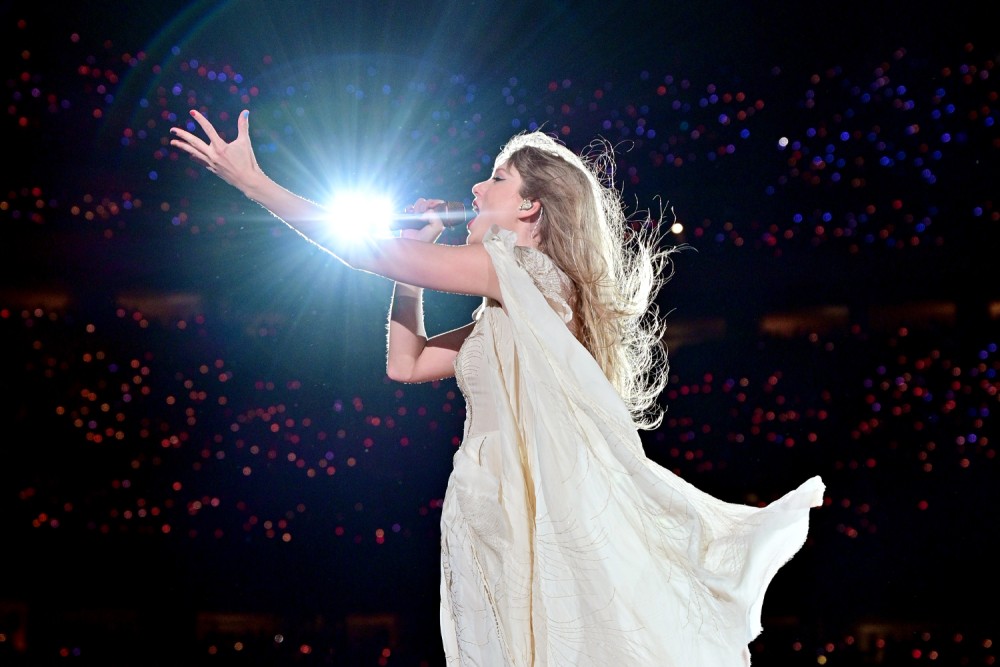Worshiping at the church of Taylor
The goodness of a Taylor Swift show points to our need for a deeper goodness.

Taylor Swift performs in May 2023 during the Eras Tour at Lincoln Financial Field in Philadelphia, Pennsylvania. (Lisa Lake / TAS23 / Getty Images)
Taylor Swift more or less plays on repeat when I’m driving around with our kids, so the recent arrival of The Eras Tour film, a new version of “Cruel Summer,” and 1989 (Taylor’s Version) all generated great excitement in our household. I’m a fan, but I’m also trying to understand. Why, exactly, is Taylor Swift so popular?
I asked the six teenagers in our minivan this question before we dropped them off to enjoy the Eras movie. (My husband, Peter, and I went for a walk. Our family had the concert experience of a lifetime back in May, and I had no need to relive it.)
The kids said they love Swift because she’s authentic, creative, relatable. That she cares about how she is seen by others but doesn’t care enough to back down from what she really believes. She seems very real. Taffy Brodesser-Akner offered a different take in the New York Times, which is that Swift allows girls and women to experience every era of their lives without cringing. She helps us receive the sad and embarrassing and romantic and immature and sincere moments all as a part of what makes us who we are, and therefore worthy of remembering and celebrating.





